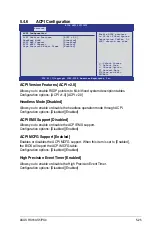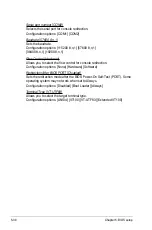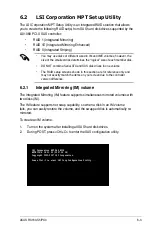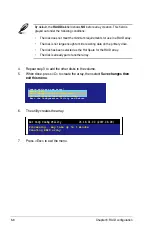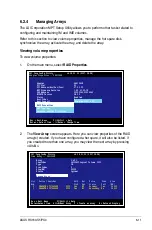
6-2
Chapter 6: RAID configuration
6.1
Setting up RAID
The motherboard comes with the following RAID solution:
•
LSI1068 PCI-X SAS controller
supports SAS disk drives and RAID0, RAID1,
and RAID1E configuration.
6.1.1
RAID definitions
RAID 0
(Data striping)
optimizes two identical hard disk drives to read and write
data in parallel, interleaved stacks. Two hard disks perform the same work as a
single drive but at a sustained data transfer rate, double that of a single disk alone,
thus improving data access and storage. Use of two new identical hard disk drives
is required for this setup.
RAID 1
(Data mirroring) copies and maintains an identical image of data from one
drive to a second drive. If one drive fails, the disk array management software
directs all applications to the surviving drive as it contains a complete copy of
the data in the other drive. This RAID configuration provides data protection and
increases fault tolerance to the entire system. Use two new drives or use an
existing drive and a new drive for this setup. The new drive must be of the same
size or larger than the existing drive.
RAID 1-E
(Enhanced RAID 1) has a striped layout with each stripe unit having a
secondary (or alternate) copy stored on a different disk. You can use three or more
hard disk drives for this configuration.
If you want to boot the system from a hard disk drive included in a created RAID
set, copy first the RAID driver from the support CD to a floppy disk before you
install an operating system to the selected hard disk drive.
6.1.2
Installing hard disk drives
The motherboard supports SATA and SAS HDD for RAID set configuration. For
optimal performance, install identical drives of the same model and capacity when
creating a disk array.
Refer to section
2.4 Hard disk drives
for SATA / SAS hard disk drive installation.
Содержание RS160-E4 - 0 MB RAM
Страница 1: ...1U Rackmount Server RS160 S5 PX4 User Guide ...
Страница 104: ...5 36 Chapter 5 BIOS setup ...


